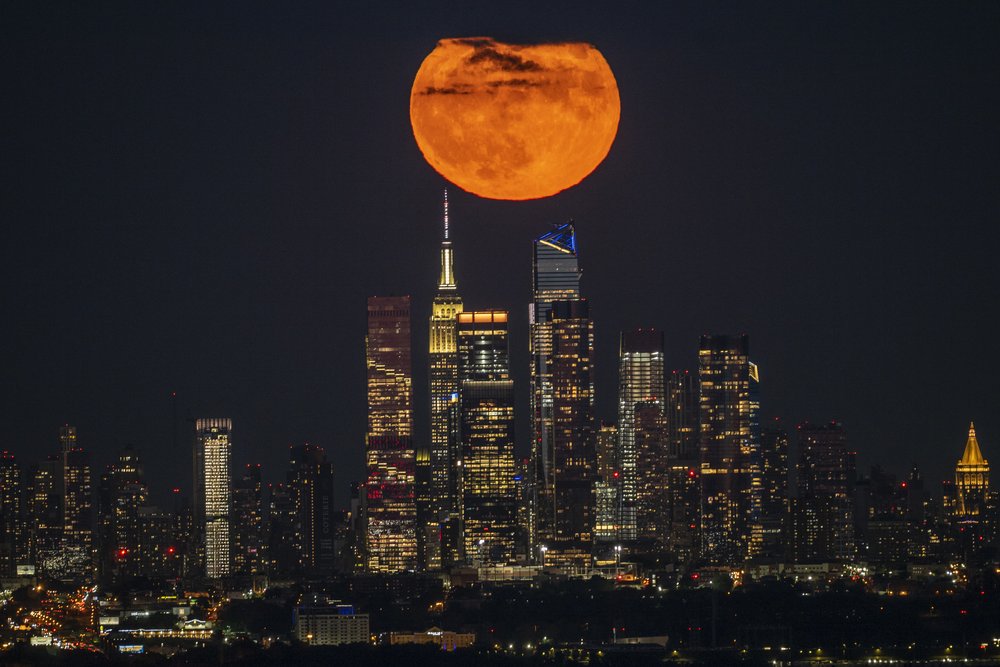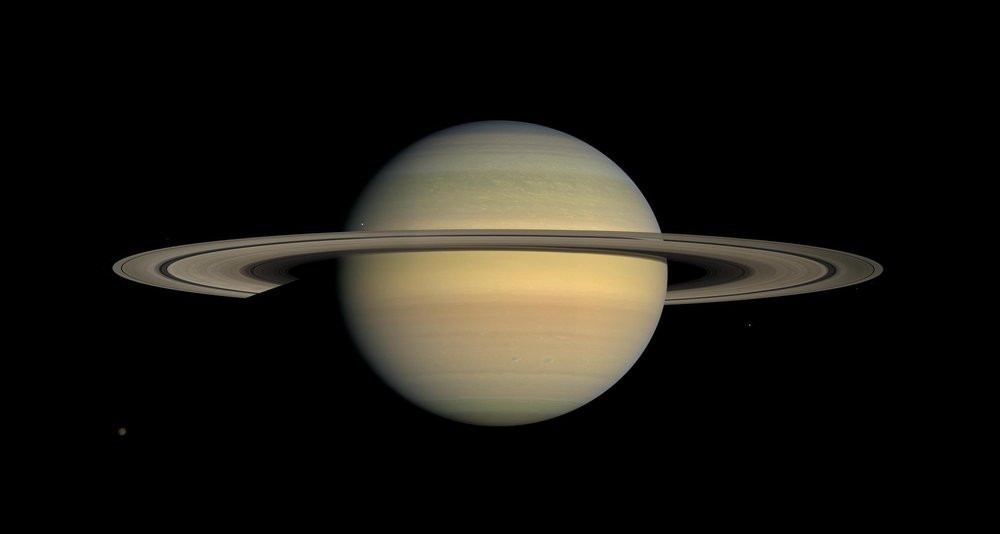August ends with rings of Saturn and a super blue moon hovering over NYC
Aug. 26, 2023, 10:01 a.m.
As the summer winds down, skygazers can enjoy the last days with views of the super blue moon and the rings of Saturn.

August is going out with a big bang – an astronomical doubleheader featuring a super blue moon and Saturn at its closest.
The blue moon will actually be silver, given the moniker has nothing to do with color, and the event is just a regular full moon. While blue moons do happen once in a blue moon (about once every two to three years), the designation refers to the second full moon in a calendar month. Usually a full moon happens once a month, but if August were as short as February, April, June, September or November, we wouldn't even be having this conversation.
Its “super” status, meanwhile, does not indicate a literal change in size, either. Rather, on the evenings of Aug. 29-31, our lunar neighbor will appear as if it has swollen by 17% and glows 30% brighter. That’s because the full moon phase coincides with the point on its orbit closest to Earth, resulting in what appears to be a three-day full moon. NYC’s peak is actually Aug. 30 when the supermoon will also appear very close to Saturn in the night sky. This week’s supermoon is one of four happening this year — with the last coming in early August and the next on Sept. 29.
“Because it's an elliptical orbit, there are times when it is closer to us,” said Bart Fried, executive vice president of the Amateur Astronomers Association of New York City. “During those periods where we're relatively closer to the moon, it will look larger, but there's nothing actually different about the moon at all.”
The cooler, rarer event will happen a few days earlier, starting Saturday evening and peaking early Sunday morning on Aug. 27. That night and for a few afterward, Saturn will appear big, shiny and yellow. The sixth planet from the sun will be at its brightest and closest to the Earth for the year – also known as “Saturn at opposition” because its position will be opposite the Earth from the sun.

“From the naked eye, [Saturn] is certainly visible from anywhere in New York City,” Fried said. “It simply will look like a star, but considering you can't see that many stars, that automatically makes it relatively bright.”
With the unaided eye, Fried recommends locating the ringed planet by using one of a number of free astronomy phone apps, such as Stellarium. For a closer look, binoculars can transform the pinprick of light into a cream-colored oval, which can make it easier to spot among the twinkling white dots.
“When you get a telescope, Saturn is one of the all-time premier objects to view,” Fried said. “The rings are just stunning, and it's very common for people to accuse me of having a photograph on the front of my telescope.”
With a telescope, Fried calls Saturn “jaw-dropping” because it looks 3-D with its rings containing billions of pieces of ice, rock and dust wrapping around it. These chunks are remnants of asteroids, comets or moons crushed by Saturn’s mighty gravity – which is slightly stronger than our own. (A 200-pound Earthling would weigh 216 pounds on Saturn). The shadows cast by the planet and the rings on each other are also visible.
“It's like you could reach into the eyepiece and reach in and touch, and it's just hanging there – this thing's almost a billion miles away, and it's just out there in space,” Fried said.
If you don’t have a telescope at home, the Amateur Astronomers Association of New York City and the municipal parks department hosts stargazing events around New York City every night from Aug. 25-30.
Fireflies may disappear, so NY scientists are trying to count how many are left No more radioactive dumping in Hudson River: NY Gov. Hochul signs ban